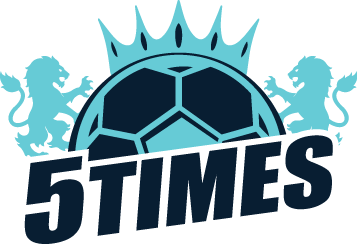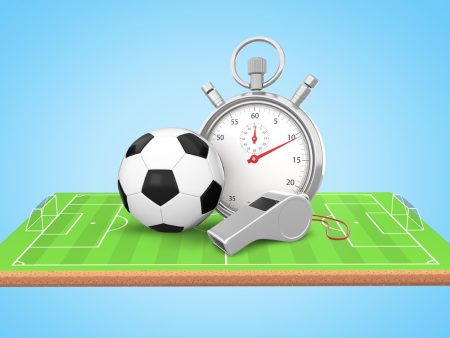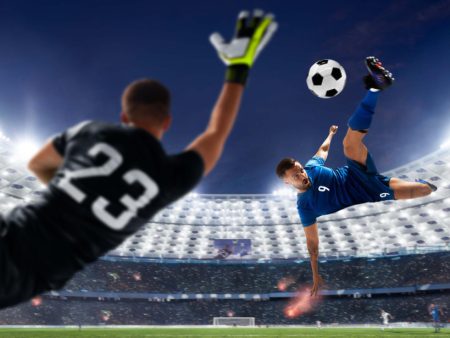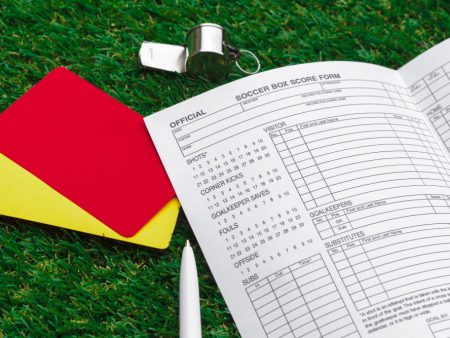
From Sunday league pitches to Premier League stadiums, understanding football positions is crucial to reading the beautiful game. Whether you’re new to the sport or a seasoned supporter, this complete guide demystifies every football position and number used in modern association football.
In the UK, football isn’t just a game it’s a way of life. But to truly appreciate the sport, it’s important to understand how a football team is structured on the pitch. This article takes you deep into the nuances of football player roles, squad numbers, and tactical setups used in English football and beyond. From goalkeepers to strikers, we’ll explain the technical and tactical responsibilities of every playing position. So, if you’ve ever wondered why the number 10 shirt carries such weight or what exactly a defensive midfielder does, this is your essential playbook.
What Are the Main Football Positions?
Every football team consists of 11 players: one goalkeeper and ten outfield players. These outfield players are divided into defenders, midfielders, and forwards. The football positions explained in this guide form the backbone of any tactical setup in association football.
Each position in football has its own specific duties and physical demands. The player’s position on the field directly influences their squad number, responsibilities during a football match, and how they contribute to both defence and attack.
What Does a Goalkeeper Do?
The goalkeeper is the last line of defence and often the first point of attack. Positioned in the penalty box, goalkeepers are the only players allowed to use their hands, provided they’re within their area. Their main job is to prevent the opposition from scoring, using quick reflexes, solid shot-stopping skills, and an ability to read the game well.
In modern football, goalkeepers also play a vital role in passing the ball out from the back to maintain possession of the ball. Their shirt usually bears the number 1 a clear nod to their unique status in the football team. A top-class goalkeeper blends traditional skills with the ability to act as a “sweeper keeper,” especially in high defensive lines.
What Are the Different Types of Defenders?
In defensive football, defenders come in various forms: central defenders (or centre-backs), full-backs, and wing-backs.
Central defenders are often strong in the air, tactically aware, and tasked with marking the opposing team’s strikers. Their role is to block shots, win headers, and tackle effectively. Think of them as the rock in the heart of the defence and attack transition.
Full-backs play on the flank and support both defence and offensive wingers. Modern full-backs are expected to overlap with wingers, offering width and delivering crosses into the penalty box.
Wing-backs are a more attacking version of full-backs. In formations like 3-5-2 or 5-3-2, wing-backs cover the entire side of the pitch, offering support at both ends. They often dribble, cross, and tackle in equal measure.
Defenders typically wear squad numbers 2 to 6, with centre-backs commonly donning 4 and 5.
What is the Role of a Defensive Midfielder?
The defensive midfielder sits just in front of the defenders, shielding the back line and breaking up opposition play. Their main job is to intercept passes, win the ball, and link defence to midfield.
This position demands high stamina, intelligence, and composure. Players like N’Golo Kanté and Declan Rice have mastered this football position, offering balance and control in the centre of the pitch. They are often assigned the number 6 shirt.
In modern football, the defensive midfielder is pivotal in initiating attacks and recycling possession of the ball, proving they’re more than just destroyers.

What Makes Central Midfielders So Important?
Central midfielders are the engine room of any football team. Covering large swathes of the pitch, they contribute to both defensive duties and attacking build-up. The best midfielders read the game exceptionally well, combining technical abilities with an innate understanding of the pace of the game.
Often wearing number 8, they form passing triangles, support attacking midfielders, and drop deep to assist defenders. The central midfield trio (defensive, central, and attacking) is the most tactically dynamic part of the field.
A midfielder needs to possess energy, vision, and an eye for space traits that define legends like Steven Gerrard and Kevin De Bruyne.
Who Is the Attacking Midfielder?
The attacking midfielder, also known as the central attacking midfielder, operates just behind the strikers. Wearing the famous number 10 shirt, their job is to create scoring opportunities, score goals, and act as the creative force of the side.
These attacking players thrive in tight spaces, often needing to dribble through compact defences and unlock backlines with incisive passes. They’re typically among the most gifted football players technically.
Famous number 10s like Wayne Rooney or Dennis Bergkamp have defined this role in the world of football.
What Are the Responsibilities of Wide Midfielders and Wingers?
Wide midfielders and wingers stretch the opposition, exploit the flank, and deliver pinpoint crosses into the box. Their role in football formations has evolved significantly.
- Wingers operate higher up the pitch and often look to cut inside or take on full-backs one-on-one. Think Mo Salah or Bukayo Saka.
- Wide midfielders, on the other hand, drop deeper to assist defensively while still carrying attacking threat.
Both roles require blistering pace, agility, and strong dribbling skills. Squad numbers often range from 7 to 11, with 7 usually associated with right-wingers and 11 with left-wingers.
Are Strikers The Most Important Players in The Team?
The striker is the tip of the spear, the player whose main job is to score goals. Positioned furthest forward on the pitch, they’re the ones judged most harshly based on how well they score.
There are various attacking positions among strikers:
- The classic centre forward, who holds up play and links with others.
- The poacher, whose job is to convert even half chances.
- The false 9, who drops into midfield to create space.
Regardless of the type, the performance of a striker tends to determine the outcome of a football match. The best centre forwards combine instinctive finishing with intelligent movement. Notable examples include Harry Kane and Erling Haaland.
What Are the Forwards in a Football Team?
Forwards encompass all players tasked with attacking duties, including strikers, wingers, and attacking midfielders. They are the players who aim to score goals and to create scoring chances for other players.
Whether they’re a target man or a speedy wide player, forwards must work in tandem, exploiting gaps, and staying sharp in the box. In many formations, teams deploy two forwards a centre forward and a support striker.
Squad numbers 9, 10, and 11 are most commonly associated with forwards, with number 9 typically reserved for the leading striker.
How Do Football Shirt Numbers Correspond to Player Roles?
Traditionally, football shirt numbers were assigned based on player positions on the field. While squad numbers are more flexible today, the classic association remains:
- 1 – Goalkeeper
- 2 – Right-back
- 3 – Left-back
- 4 – Centre-back or defensive midfielder
- 5 – Centre-back
- 6 – Defensive midfielder
- 7 – Right winger
- 8 – Central midfielder
- 9 – Centre forward
- 10 – Attacking midfielder
- 11 – Left winger
These numbers help fans understand roles and even gauge team tactics. In international tournaments like the World Cup, shirt numbers carry extra prestige, often linked to footballing legends.

What Is a Sweeper and Is It Still Used?
The sweeper is a more traditional football position, positioned behind the central defenders. Their job was to “sweep up” any through balls or defensive errors. Unlike other positions, the sweeper had more freedom and less man-marking duties.
Though less common in today’s modern game, the sweeper’s role has evolved into the ball-playing centre-back or the goalkeeper acting as a last line of defence. Franz Beckenbauer epitomised the role, but in modern football, tactics have shifted toward a flat back four.
Why Are Football Formations So Important?
Tactics define how these various positions are utilised. The way 11 players are arranged on the football pitch determines whether a team plays defensively or goes all out in attack.
Popular formations include:
- 4-4-2: Balanced with two forwards
- 4-3-3: Emphasises wide forwards and midfield dominance
- 3-5-2: Leverages wing-backs and a midfield-heavy approach
Each system dictates different player roles, affecting how teams defend and score.
Understanding football formations helps you analyse games better, predict tactical shifts, and appreciate the development of the game over time.
📌 Final Takeaways: Football Positions Explained
Here’s what to remember from this complete guide to football positions explained:
- A football team has one goalkeeper and ten outfield players.
- Goalkeepers are unique in that they can use their hands and are the last line of defence.
- Defenders include central, full-back, and wing-back roles.
- Midfielders are split into defensive, central, and attacking types.
- Forwards cover strikers, centre forwards, and wingers.
- Each football position is linked to traditional football shirt numbers.
- Squad numbers still hold meaning in English football and the national team setup.
- Roles like sweeper and false 9 showcase the evolving nature of the modern game.
- Tactical football formations shape how teams approach attack and defence.
- To truly follow a match, understanding playing positions is essential.
Now you know exactly how each football player fits into the beautiful game. Next time you watch a match whether it’s Sunday league or the World Cup you’ll spot the playing positions and player roles like a seasoned pro.










